22 April, 2023. It was a gorgeous sunny Saturday when my wife and I drove from Grudziądz, where we based ourselves from a few days, to the town of Chełmno.
Well, I’m glad that we didn’t drive straight back to Gdańsk as Chełmno exceeded my expectations.
Before I describe and visually present the top sights in Chełmno, let’s dive in with a bit of background information about the town.
A little bit about Chełmno
With a little under 20,000 inhabitants, the town of Chełmno is located near the Vistula river in central-northern Poland. Chełmno is located in the Kuyavian-Pomeranian region. The nearest cities are Grudziądz (33 km away), Toruń (45 km away) and Bydgoszcz (50 km away). Warsaw is 250 km away from Chełmno.
The name Chełmno derives from chelm, the old Polish word for hill. In official documents, the Germanized name Culm/Kulm appeared. Chelmno was first mentioned in 1065. In 1226, Duke Konrad I of Masovia invited the Teutonic Knights to Chełmno Land. Kulm obtained city rights in 1233 when it was already firmly under the rule of the Teutonic Order.
Chełmno has several additional names, with “Little Kraków” and the “City of Lovers” being among the most popular. Continue reading to find out why Chełmno is known as the “City of Lovers”.
Taking in the Main Sights in Chełmno
We parked on the north-east corner of the Main Square. It was a Saturday which meant that we didn’t have to pay for parking.
From there we made our way to Wodna Street, from where we began our walking tour of Chełmno.
1. Mural “Panienka z okienka”
At 8 Wodna Street, there’s an unmissable blue tenement house which really does stand out from the rest of the buildings in the area.
The mural you can see below is called Panienka z okienka (lit. The Lady from the window). In actual fact, you can see an elegant lady and a stylish gentleman greeting one another.
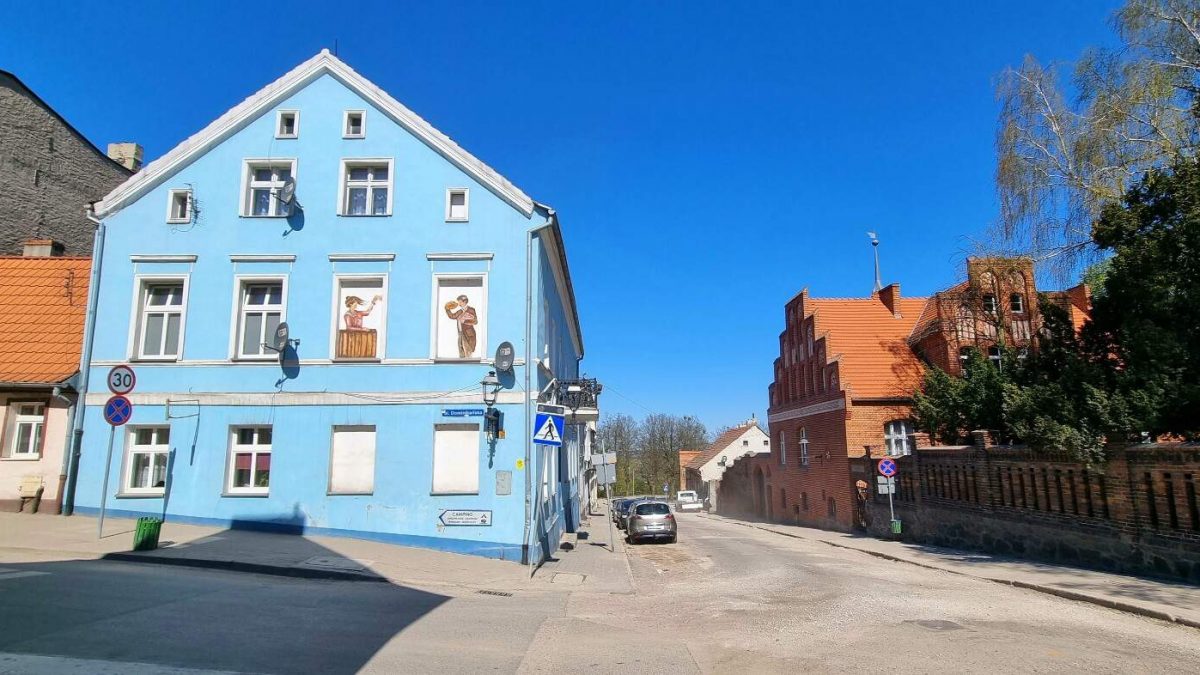

2. Defensive walls in Chełmno
At the end of Wodna Street, to the right, you can walk along ul. Nowe Planty. This walkway is dominated by a preserved fragment of Chełmno’s defensive walls.
A Brief History of the Defensive Walls in Chełmno
The construction of defensive walls in Chełmno began in the second half of the 13th century. In 1251, German Land master Eberhard von Sayn handed over all defence-related matters of Chełmno to the townspeople – at their own request. At this time, the Teutonic Knights had little influence over the town and completely withdrew from it with time.
A document from 1267 informs us that the townspeople began construction work on brick fortifications, in connection with the allocation of town plots to the cistercian sisters.
In the first quarter of the 14th century, the town walls were raised and equipped with battlements. Over the following two centuries, the fortifications witnessed further modernisation and repairs. In 1563, the battlements were bricked up, while the curtains were raised again.
During the Swedish wars with Poland from the 17th century, the fortifications were damaged. Anyway, the importance of these defensive walls decreased with the development of artillery. Nevertheless, the walls were renovated in 1678. Repairs even took place in the nineteenth century despite the fact that the fortifications had no military significance.
Architecture
As previously alluded to, Chełmno was founded on a hill. The slopes of this hill fell rather steeply to the north-west into the Vistula Valley and equally steep, though less high, on the south-east side, to the valley of the Browina Stream.
Determined by the shape of the hill, the perimeter of the defensive walls was established on an irregular plan. Wherever possible, the course of the walls was implemented in straight sections. The wall’s circumference was over 2,300 metres.
Chełmno had up to 27 towers. Of these, 18 towers were constructed on a rectangular plan and protruded from the face of the wall. They were open from the town side. Arrowslits were a prominent feature of the towers. In the southern part of the perimeter, five towers were built on a semi-circular plan.
Gates located at the outlets of the main streets ensured that access to the town was possible. These gates were The Grudziądz (originally Grubińska) gate from the north-east, the Fishery and Water gates on the north-west side, The Toruń Gate (Holy Spirit Gate) in the south, The Franciscans’ Gate in the west, The Bridge Gate from the south-west and the Weaving Gate in the south-east.
The Current State of the Defensive Walls in Chełmno
Chełmno is one of the few Polish towns which has an almost fully preserved circumference of its medieval defensive walls. Roughly 80% of the walls are still intact, while 23 towers are still standing today. Two of the most interesting towers to view are The Gunpowder Tower (Baszta Prochowa), which houses the archaeological branch of the Chełmno Land Museum, and The Maiden Tower (Baszta Panieńska).



3. The Dominican Fortified Tower
Worthy of a mention in its own right is the well-preserved Dominican Fortified Tower (Baszta Dominikanów). This is because it’s located in a pretty spot in the vicinity of the Nowe Planty park.
The Dominican Fortified Tower was constructed at the start of the 14th century by the Dominican Order.

4. Nowe Planty
Between the Dominican Fortified Tower and Grudziądz Gate, there’s a wonderful park known as Nowe Planty.
The park is overshadowed by the defensive walls, which adds to the overall charm of Nowe Planty. You will also find a fountain and the famous Lovers’ Bench here. The impressive building of the City Government Office (Urząd Miasta) is just 60-70 metres away from the park, parallel with The Grudziądz Gate.

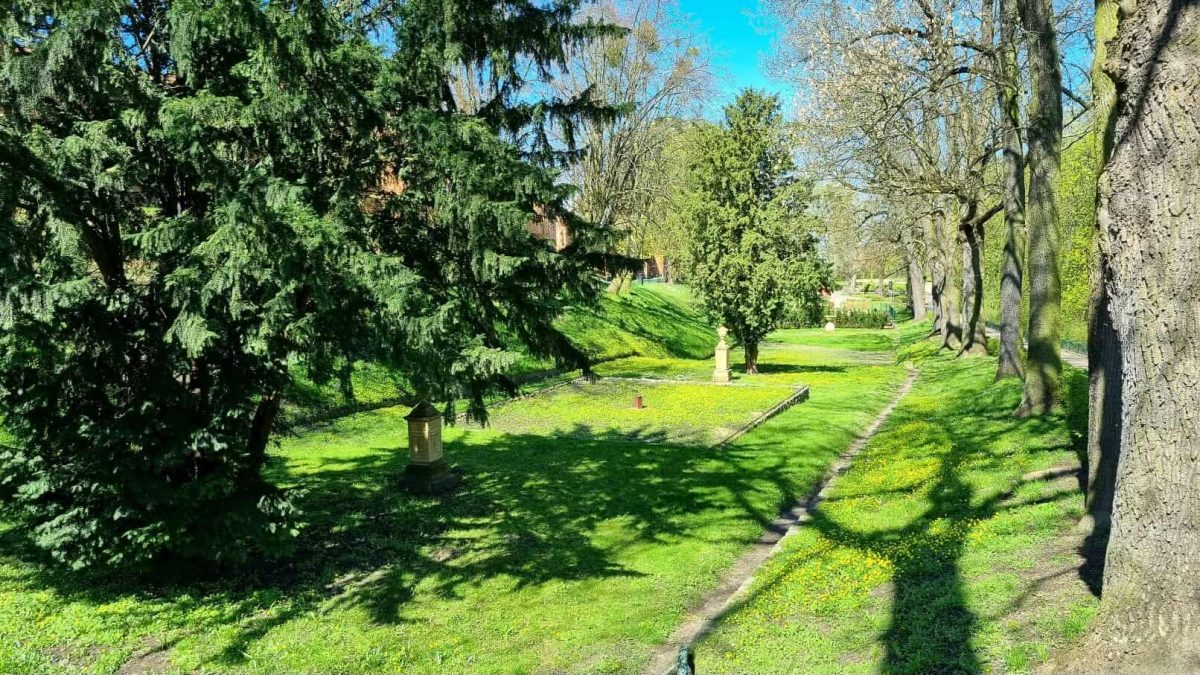

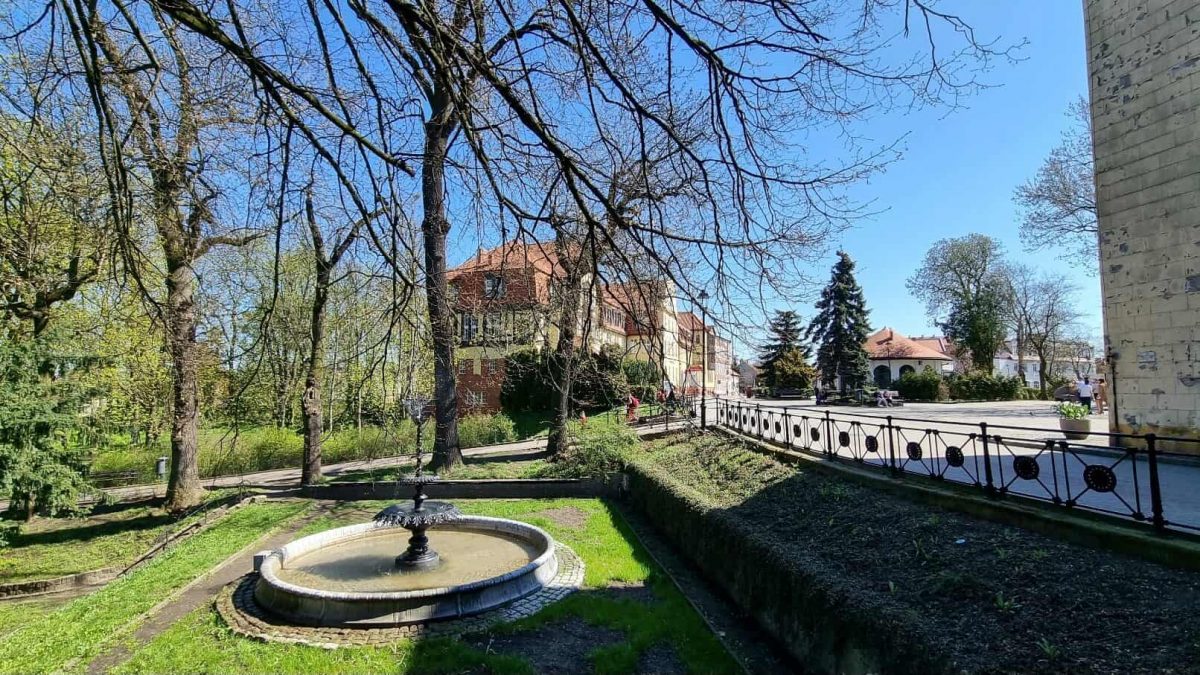
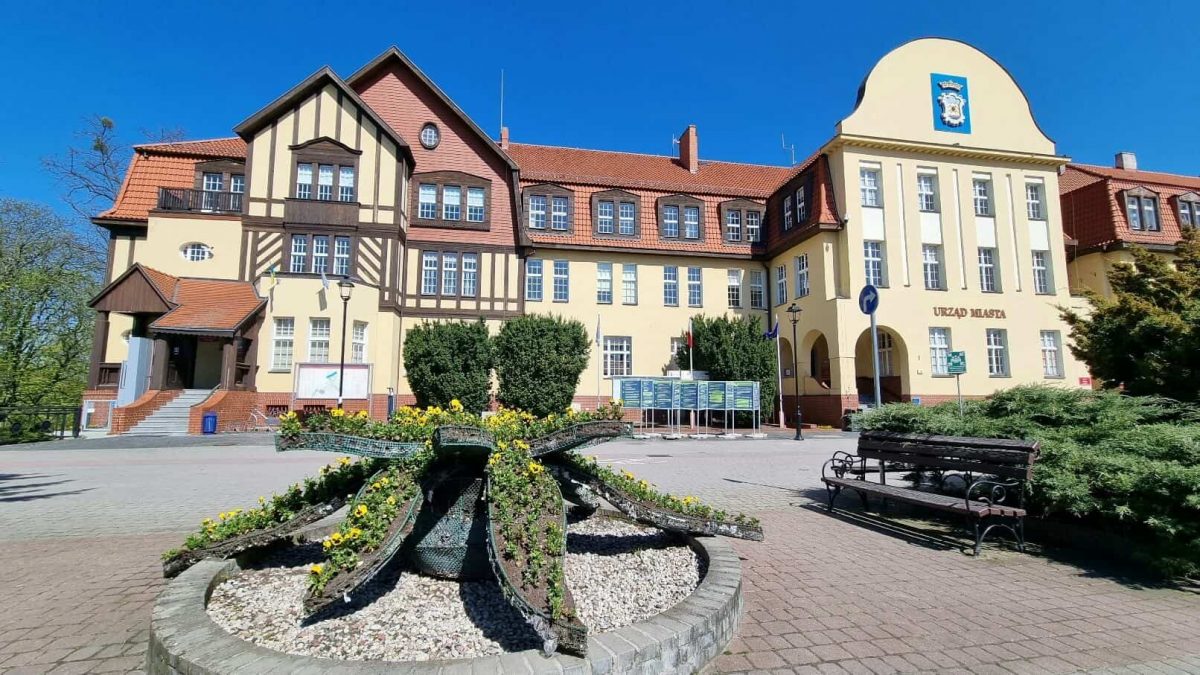
5. The Lovers’ Bench
Situated in Nowe Planty Park just a few steps from from Grudziądzka Gate, you will find the Lovers’ Bench (Ławeczka Zakochanych).
Predictably, there are plenty of love locks attached to the bench. Moreover, there is a sign above the bench which reads CHEŁMNO – MIASTO ZAKOCHANYCH (i.e. Chełmno – The City of Lovers). Consider for a moment the story behind why Chełmno became known as “The City of Lovers”.
Essentially, the parish Church of the Assumption of the Blessed Virgin Mary, located just off the Market Square, has housed some incredible relics ever since the Middle Ages. These relics are small pieces of skull which belonged to St. Valentine, the patron saint of love. Every year, on 14 February, thousands of tourists descend on Chełmno to celebrate St. Valentine’s Day alongside the city’s inhabitants.
This article goes into more detail about the relics and Valentine’s Day.

6. The Grudziądz Gate
The Grudziądz Gate (Brama Grudziądzka) is literally a few metres away from the Lovers’ Bench.
Built at the end of the 13th century, The Grudziądz Gate is one of seven gates within Chełmno’s defensive wall structure that was not pulled down in the 19th century.
In around 1620, a chapel called Na Bramce (“On the Gate”), which is associated with the cult of Our Lady of Chełmno, was added.


7. The Miniature Park of Teutonic Castles
One of the top sights in Chełmno is the Miniature Park of Teutonic Castles (Park Miniatur Zamków Krzyżackich). What’s more, it’s free to visit.
The Miniature Park of Teutonic Castles is just a few minutes’ walk south of Grudziądz Gate.
All in all, there are miniature constructions of nine Teutonic castles. Each castle is made to a scale of 1:30. Therefore, you can clearly see which of the castles is the largest.
The models look like real castles due to the use of mini bricks. Moreover, the designers paid attention to the details of the external facades. The miniatures are empty inside.
Each castle is accompanied by an interesting description in Polish, English and German. Particular emphasis is given to the legends associated with the castles.


8. Chełmno’s Market Square
Chełmno’s market square was shaped in the Middle Ages. Over the years, the Gothic tenement houses disappeared from the square. At the turn of the 19th and 20th centuries, completely new tenement houses were constructed. They decorate the square today.
Only one tenement house remains from the Middle Ages – the Cywiński Tenement House (Kamienica Cywińskich). It was built in the second half of the 13th century:

The focal point of the market square and Chełmno itself is the beautiful Renaissance Town Hall.
Originally constructed right at the end of the 13th century, the Town Hall was expanded and thoroughly transformed in the Renaissance style in the years 1567-1572. As for the tower, it was built between 1584 and 1596. The clock on the tower was made in 1590 by Georg Wilhelm from Toruń.
In the years 1884-1887, the Town Hall was renovated and partially rebuilt according to the design of T. W. Hermann. The second floor was added.
Conservation works carried out in the years 1956-1959 revealed the remains of the Gothic town hall.
The Town Hall is currently the seat of the Chełmno Land Museum.
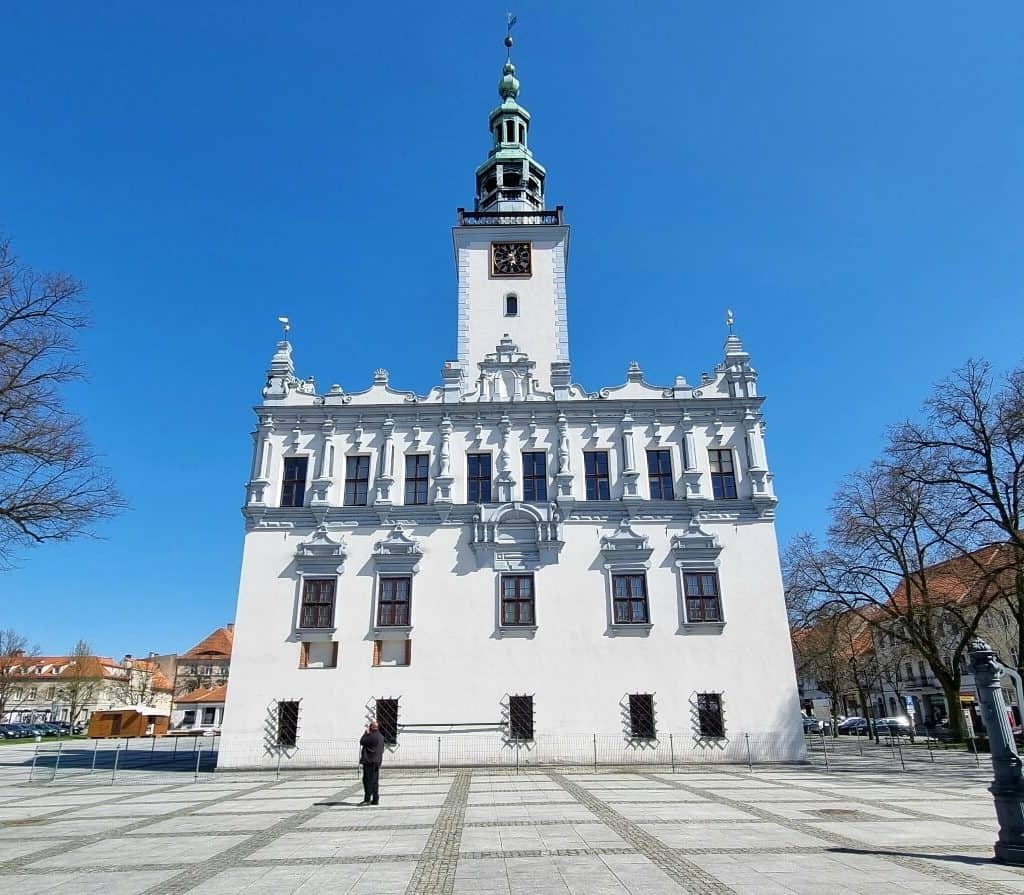

Other Top Sights in Chełmno
So I have described my personal top sights in Chełmno. There are several more sights in the town which are well worth visiting. These include:
- The Church of the Assumption of the Blessed Virgin Mary – You can see the relics of Saint Valentine here and also climb the bell tower
- The former Cistercian and Benedictine nuns abbey complex – Built in the 13th/14th centuries. Within the monastery complex, it’s worth seeing the Merseburg Gate (Brama Merseburska) and Mestwin’s Tower (Baszta Mestwina)
- The Church of the Holy Spirit – Built in the late 13th century, The church of the Holy Spirit is a rare example of a well-preserved Gothic hospital temple that has not been subjected to major modern transformations
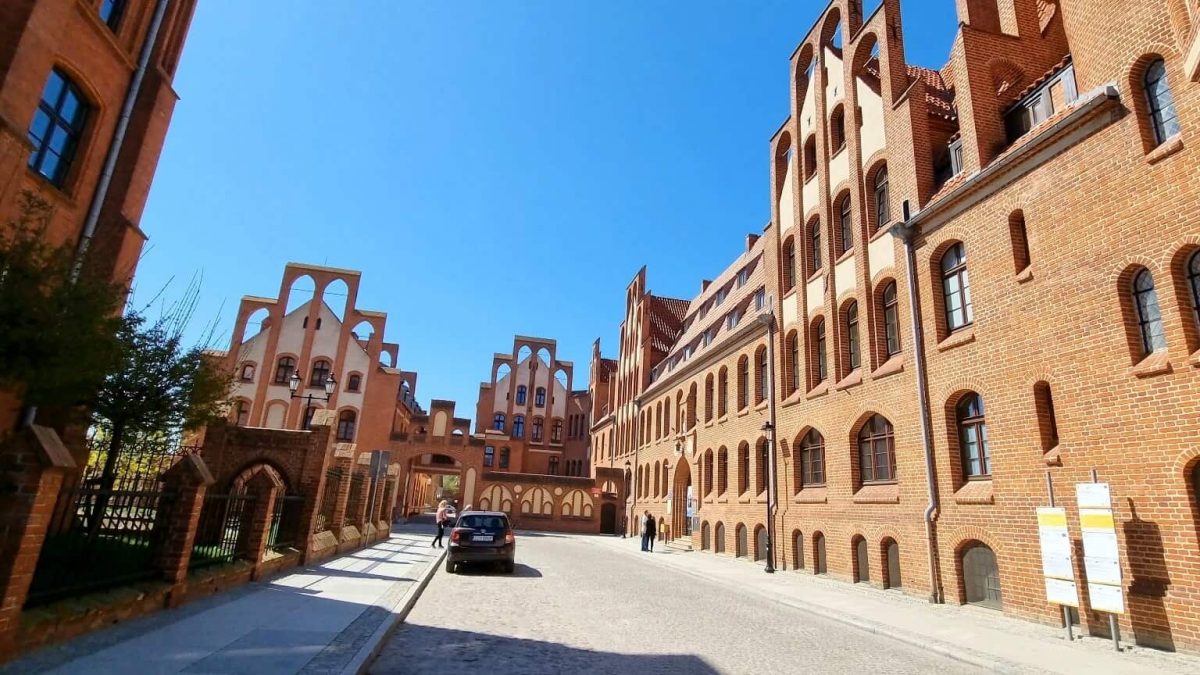
Final thoughts on my visit to Chełmno
I left Chełmno full of wonderful impressions. It’s a small town but there are enough historical remnants, attractions and monuments there to keep you occupied for half a day or even a full day if you’re really into your history.
Having lived in Gdańsk since February 2020, I’ve visited quite a few places in northern Poland. Chełmno’s certainly right up there among my favourite destinations.
All in all, I’m hoping to return to the Kuyavia-Pomerania region soon to visit Brodnicki Landscape Park, the town of Świecie and Włocławek.

